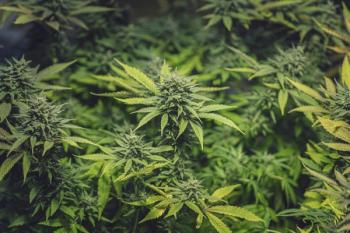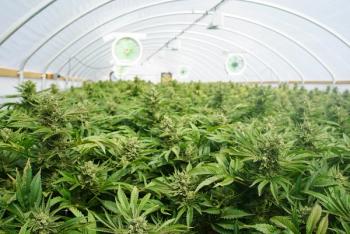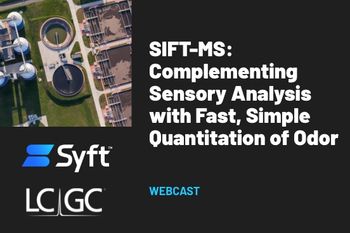
Messina Institute of Technology scientists used gas chromatography–mass spectrometry (GC–MS) was used to profile illegal samples of Cannabis sativa L.


Messina Institute of Technology scientists used gas chromatography–mass spectrometry (GC–MS) was used to profile illegal samples of Cannabis sativa L.

A recent study analyzed nearly 100 CBD products to test the accuracy of advertised cannabinoid content.

Scientists from the Federal University of Santa Catarina reviewed recent advancements made in the chromatographic analysis of endocannabinoids and phytocannabinoids in biological samples.

Connecticut Agricultural Experiment Station scientists recently used gas chromatography with flame ionization detection (GC-FID) to measure different components in cannabis hemp samples.

Scientists from Naif Arab University recently used a new approach to protect amide-based synthetic cannabinoids from degradation and esterification during GC–MS analysis.

During the 18th International Symposium on Hyphenated Techniques in Chromatography and Separation Technology, experts presented a workshop on different ways multidimensional liquid chromatography can be applied.

LCGC International sat down with Zacariah Hildenbrand, chief science officer of Infinity Water Solutions and Partner of Medusa Analytical, to discuss the latest trends and challenges in cannabis analysis.

Here are the top five articles that the editors of LCGC International published this week.

Chromatographic and spectroscopic techniques alike were reviewed for their current effectiveness and future potential in this lecture session at Analytica 2024.

The 26th Norwegian Symposium on Chromatography was held 21–23 January 2024. The symposium has strong traditions in the Norwegian separation science community, serving as a forum for excellent scientific talks, networking, and social events.

In a study from Cornell University, scientists created a new means of identifying hemp plants that can exclusively create cannabidiol (CBD).

A novel LC–MS/MS method, with a dual ESI and APCI source using simple solvent extraction for sample preparation, was validated for analysis of 102 pesticides and 5 mycotoxins regulated by Colorado state in dried hemp.

Brandy Young, PhD, an analytical chemist with more than 15 years of experience, entered the cannabis industry in response to a recognized need for laboratory testing, aligning her expertise with the emerging demand in New York's active medical and adult-use cannabis programs. Here, she shares some background information on her Eastern Analytical Symposium (EAS) talk, which delves into the characterization of tetrahydrocannabinol (THC) isomers in cannabis products.

At the Eastern Analytical Symposium (EAS) in Plainsboro, NJ, Rabi Musah from the State University of Albany presented a talk titled, "Things WE’ED Like to Avoid - Circumventing Measurement Challenges When Analyzing Complex Cannabis Matrices". This presentation discussed the complexities of cannabis testing and why we need new methods in the industry.

At EAS 2023, Brandy Young, PhD, the CEO and Founder of Certainty Analytical Labs in New York, discussed her work in compliance testing for cannabis products.

At the Eastern Analytical Symposium (EAS) in Plainsboro, NJ, Sam Heckle, an analytical chemist from CEM Corporation, presented “The Importance of Digestion Temperature on Trace Metals Analysis”, where he discussed the do’s and don’ts of heavy metal analysis meant to get optimal digestion.

To measure a method’s environmental friendliness and its sustainability, one must consider its productivity and analytical performance.

At the Cannabis Sciences Conference, Zacariah Hildenbrand held a talk which focused on various analytical methods and how they affect the cannabis production process.

Orange Photonics said the agency will use its LightLab 3 as part of a broader effort to regulate and test the safety of food-related cannabis products.

Webinar Date/Time: Thu, Jun 22, 2023 2:00 PM EDT

Webinar Date/Time: Airing 1: Thursday June 15, 2023 at 10am EDT | 3pm BST | 4pm CEST Airing 2: Thursday June 15, 2023 at 1pm EDT | 12pm CDT | 10am PDT

The current challenges and future perspectives of the purification of cannabinoids from cannabis extracts are presented in this review article.

Webinar Date/Time: Wednesday, Feb 15th and Thursday, Feb 16th, 2023 Day 1: 9:00 am EST – 2:45 pm EST Day 2: 8:30 am EST – 4:30 pm EST

Register now for a virtual symposium with presentations on Building a Cannabis Lab, Product Safety, Product Quality, Best Practices and Advanced Topics, and an interactive Certificate-Based Cannabis Testing Master Class session.

HPLC is emerging as the preferred analytical method for potency testing of cannabinoids, but fundamental work is needed to solve critical issues and contribute to advancing knowledge.